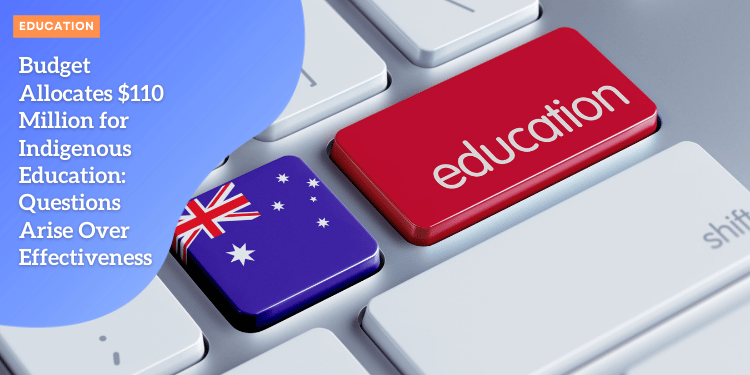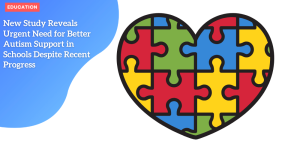Budget Allocates $110 Million for Indigenous Education: Questions Arise Over Effectivenesseduca

Anúncios
The 2024 federal budget has earmarked A$110 million for Indigenous education initiatives, aiming to bridge the gap between Indigenous and non-Indigenous learning and achievement.
However, this significant allocation has sparked debate over its potential effectiveness and whether these measures align with what research suggests about improving educational outcomes for Indigenous communities.
Analyzing the Context and Basis for Funding
This monumental investment in Indigenous education is a testament to the government’s commitment to Closing the Gap, a national strategy aimed at improving the lives of Aboriginal and Torres Strait Islander people.
Yet, critics argue that such allocations may overlook the importance of incorporating Indigenous voices and perspectives in policymaking.
According to Governor Linda Burney, improving Indigenous education is paramount.
However, there has been a historical pattern of excluding Indigenous input in policy discussions, leading to concerns over the true efficacy of these budgetary measures.
The Productivity Commission highlighted in 2020 that policies should draw extensively on Indigenous perspectives, priorities, and knowledge.
The Importance of Evidence-Based Approaches
In order to achieve substantive progress in indigenous education, it is crucial to consider evidence-based approaches.
The 2023 Closing the Gap report revealed that essential indicators, such as students achieving their full learning potential and young people engaging in employment or education, showed improvement but remained off-track.
This underlines the need for measures grounded in what works for Indigenous communities.
Policymakers and politicians often decide on the relevance of evidence based on their own biases.
Therefore, reevaluating the methods for assessing and implementing these measures becomes essential to ensure they meet the needs of Indigenous students.
Breakdown of the Budget’s Allocation for Indigenous Education
A closer look at the education portfolio’s budget reveals a total of A$110 million allocated over four years, aimed at “accelerating action” on Closing the Gap in education.
This comprehensive financial injection includes:
- $27.5 million over three years: Dedicated to extending an Indigenous education scholarship program and supporting English language learning for Indigenous children.
- $32.8 million over two years: Designated for the Clontarf Foundation, a non-profit organization established by former footballer Gerard Neesham, who is not of Indigenous descent. The Clontarf Foundation utilizes sport to attract and retain Indigenous boys in school with the aim of equipping them with the values, skills, and abilities necessary for meaningful employment and improved life outcomes.
Gender Disparity in Funding: The Case of the Clontarf Foundation
The largest single allocation of $32.8 million to the Clontarf Foundation has raised significant concerns due to its exclusive focus on Indigenous boys.
The foundation’s program, while beneficial, does not cater to Indigenous girls, creating a glaring gender disparity in funding distribution.
This limited focus on one gender was previously questioned in 2020 by Tanya Plibersek, then the Labor education spokesperson, who asked, “Why do Indigenous girls miss out?”
Critics also argue that the Clontarf model, which requires student enrollment in traditional schools and mentorship on behavioral and lifestyle issues, is based on Eurocentric and paternalistic values, potentially overlooking the cultural context and needs of Indigenous students.
A Research-Backed Approach to Indigenous Education
Research indicates that successful outcomes in Indigenous education are best achieved through localised approaches developed in partnership with Indigenous communities.
Schools should foster environments where Indigenous students feel a sense of belonging and strength in their identities.
This involves providing diverse role models across various fields, not just sports, to inspire Indigenous youth.
Contrary to the current funding model, the emphasis should be placed on building the capacity of schools to educate Indigenous students rather than relying on external bodies.
This paradigm shift necessitates adequate investment in schools’ resources and training programs to better serve Indigenous students.
Introducing a New First Nations Education Policy
The budget additionally allocates $18.2 million over four years to formulate a new educational policy for First Nations, with the objective of cultivating partnerships and enhancing engagement with key stakeholders from First Nations communities.
Additionally, $29.1 million over four years is allocated to support First Nations peak education bodies.
While these initiatives are promising, they must lead to tangible changes in how governments engage with Indigenous communities when making funding decisions.
New policy announcements should be grounded in evidence and receive the backing of the relevant peak bodies.
Where empirical data is lacking, the budget should incorporate provisions for independent, rigorous, Indigenous-led evaluations of newly introduced education programs.
The Broader Impact of Media and Public Perception
In a media-driven world where sensationalism can overshadow substantive discussion, the true impact of these budget allocations may be obscured.
Informative journalism that remains independent and unbiased plays a critical role in fostering transparent discussions around complex issues like Indigenous education.
The Conversation, a not-for-profit platform producing journalism written by academics, exemplifies the kind of impartial reporting needed to shed light on such critical matters.
Supporting independent journalism can help ensure that these discussions remain focused on the well-being of Indigenous communities and the effectiveness of policy measures.
Conclusion
The allocation of $110 million for Indigenous education in the 2024 federal budget marks a significant step towards addressing disparities in educational outcomes.
However, the effectiveness of these measures depends heavily on how well they align with the needs and perspectives of Indigenous communities.
As the government and policymakers move forward, it is essential to heed the lessons from research and prioritize Indigenous-led approaches in developing and evaluating educational policies.
Ensuring gender equity in funding and fostering environments where Indigenous students feel valued and empowered will be crucial in achieving the desired progress.
Ultimately, the success of these initiatives will hinge on continuous engagement with Indigenous communities and a steadfast commitment to evidence-based strategies.
In doing so, Australia can move closer to closing the educational gap and building a more inclusive and equitable society for all.
By maintaining focus on these principles and advocating for informed, independent journalism, stakeholders can play a pivotal role in shaping a brighter future for Indigenous education.






